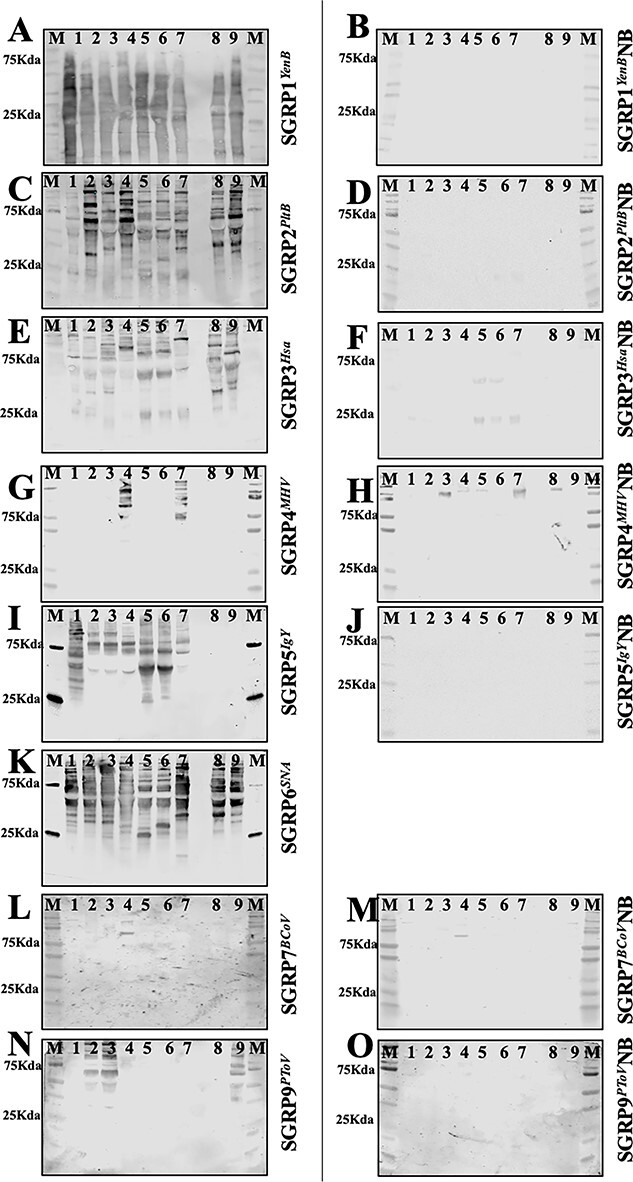Fig. 3.

Specific recognition of sialoglycoproteins in mammalian sera by SGRPs in western blots. Mammalian sera from mouse (1), rat (2), rabbit (3), Guinea pig (4), goat (5), sheep (6), horse (7), human (8), and Cmah−/− mouse (9) were subjected to SDS-PAGE under conditions that protect labile O-acetyl groups immunoblotted and probed with SGRPs. M in each blot represents the molecular weight marker. Panels a and b show blots interrogated with SGRP1YenB and SGRP1YenBNB (both at 1 μg/ml); panels c and d show blots interrogated with 1-μg/ml SGRP2PltB and SGRP2PltBNB; panels e and f represent SGRP3Hsa and SGRP3HsaNB (both at 1 μg/ml); panels g and h show blots probed with 1 μg/ml of SGRP4MHV and SGRP4MHVNB; panels i and j show blot probed with 0.33-μg/ml SGRP5IgY and SGRP5IgYNB; panels k is blot interrogated by 1-μg/ml SGRP6SNA; panels l and m show blots probed by 1-μg/ml SGRP7BCoV and SGRP7BCoVNB, and panels n and o represent blots interrogated with 2-μg/ml SGRP9PToV and SGRP9PToVNB. Binding of biotinylated SGRPs was detectable and developed using streptavidin IRDye 680 (1:10,000). Analysis was done on a LiCor odyssey infrared imager. Both blots for each SGRP set were detected at the same time using the same conditions.
